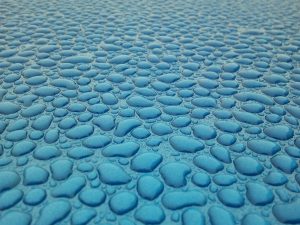BIS has published following standards for water for human consumption
which give limits of various parameters including chemical parameters:
IS 10500:1991 Drinking water - Specification.
IS 14543:2004 Packaged Drinking Water (Other than Packaged Natural Mineral Water) - Specification.
IS 13428:2005 Packaged Natural Mineral Water - Specification.
IS 4251:1967 Quality tolerances for water for processed food industry.
IS 3957:1966 Quality tolerances for water for ice manufacture.
BIS has also published a standard for irigation water namely IS 11624:1986 Guidelines for the quality of irrigation water.

IS 10500:1991 Drinking water - Specification.
IS 14543:2004 Packaged Drinking Water (Other than Packaged Natural Mineral Water) - Specification.
IS 13428:2005 Packaged Natural Mineral Water - Specification.
IS 4251:1967 Quality tolerances for water for processed food industry.
IS 3957:1966 Quality tolerances for water for ice manufacture.
BIS has also published a standard for irigation water namely IS 11624:1986 Guidelines for the quality of irrigation water.
Safe Drinking Water Guidelines in India
World Health Organisation
reported that in 1975, about 1230 million people were without safe
drinking water supplies. This appalling fact leads to the United Nations
in declaring International Drinking Water Supply and Sanitation decade,
beginning in 1981. Further, the VI Five Year Plan of India had made a
special provision for availability of safe drinking water to the masses.

Standard For Safe Drinking Water
The Bureau of Indian Standards (BIS)
has specified drinking water quality standards in India to provide safe
drinking water to the people. It is pertinent that drinking water
sources be tested at regular intervals and ensure that water is meeting
the prescribed standards or not, if not, then, the extent of
contamination/unacceptability and follow up required.
Another guideline for water quality is
prescribed by Ministry of Water Resources, Government of India in 2005.
This is known as the Uniform Protocol for Water Quality Monitoring. The
increasing risk of geogenic and anthropogenic contamination has led to
necessitate the above.
What is the drinking water quality? According to Central Ground Water Board,
BIS (IS_10500 and revised module IS 10500:2012) has specifications in
Uniform Drinking Water Quality Monitoring Protocol. This standard has
two limits i.e. acceptable limits and permissible limits in the absence
of an alternate source. If any parameter exceeds the limit, the water is
considered unfit for human consumption.
In broad terms, if the water is
bacteriology contaminated (E-coli and viruses etc), or if chemical
contamination exceeds maximum permissible limits, the BIS considers that
water unfit for drinking.
Together We Can
offer the latest drinking water specifications as per the BIS.
According to BIS 1500-2012 the acceptable limit of bacteria and other
major contamination are as follows:
|
Test parameter |
Acceptable limit |
Permissible limit (In the absence of alternate source of water) |
|
pH value |
6.5-8.5 |
No relaxation |
|
Turbidity |
1 |
5 |
|
Total hardness as CaCo3, mg/l, Max |
200 |
600 |
|
E.coli presence/absence |
Shall not be detectable in any 100ml sample |
Shall not be detectable in any 100ml sample |
|
Total iron as Fe, mg/l, Max |
0.3 |
No relaxation |
|
Taste |
Agreeable |
Agreeable |
|
Odour |
Agreeable |
Agreeable |
No comments:
Post a Comment